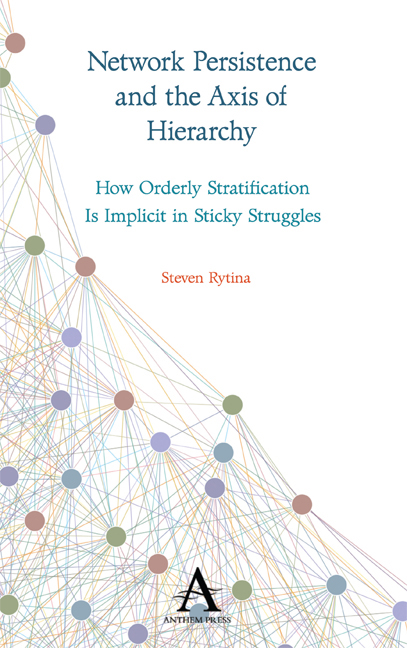 Network Persistence and the Axis of Hierarchy
Network Persistence and the Axis of Hierarchy Book contents
- Frontmatter
- Contents
- List of Illustrations
- Preface
- Chapter One Sticky Struggles: The Unified Pattern of Social Ranks Inherent in Networks
- Chapter Two Foundations of Cacophony
- Chapter Three Knots of Regularity
- Chapter Four Hierarchy: Inevitable but Inevitably Messy
- Chapter Five The Inevitable Emergence of Stratification
- Chapter Six Scaling Intergenerational Continuity: Is Occupational Inheritance Ascriptive After All?
- Chapter Seven Taming the Mobility Table
- Chapter Eight Is Occupational Mobility Declining in the United States?
- Chapter Nine The Continuum of Class over Time: Deconstructing Imposed Class to Uncover Empirical Classes
- Chapter Ten Concluding Reflections
- Appendix Why Robust Attraction Is (Effectively) Inevitable for Mobility Data
- Index
Chapter Eight - Is Occupational Mobility Declining in the United States?
Published online by Cambridge University Press: 30 April 2020
- Frontmatter
- Contents
- List of Illustrations
- Preface
- Chapter One Sticky Struggles: The Unified Pattern of Social Ranks Inherent in Networks
- Chapter Two Foundations of Cacophony
- Chapter Three Knots of Regularity
- Chapter Four Hierarchy: Inevitable but Inevitably Messy
- Chapter Five The Inevitable Emergence of Stratification
- Chapter Six Scaling Intergenerational Continuity: Is Occupational Inheritance Ascriptive After All?
- Chapter Seven Taming the Mobility Table
- Chapter Eight Is Occupational Mobility Declining in the United States?
- Chapter Nine The Continuum of Class over Time: Deconstructing Imposed Class to Uncover Empirical Classes
- Chapter Ten Concluding Reflections
- Appendix Why Robust Attraction Is (Effectively) Inevitable for Mobility Data
- Index
Summary
The issue of trend in mobility provides occasion to develop two further strengths of the principal dimension.1 First, the family of concepts that arises from the thesis of a principal dimension provides new solutions to old conceptual puzzles. Second, the issue of trend brings questions of change and replication to the foreground.
Conceptually, the principal dimension can be summed up as the pattern of persistence for occupations over time. Persistence is spelled out as simple averages over ancestors and descendants. Differences among averages mark off relative stratum within a system of strata. Populations, not essences, are addressed. And stratum refers to a subpopulation defined by contrasts in rank that persist over time.
This specification is a close fit to how stratification has been conceptualized by authorities as diverse as Pierre Bourdieu and O. D. Duncan. On such grounds, the principal dimension could be said to form a stratification scale. Occupations— not as roles or entities but simply as subpopulations coded out of divided labor— enter as a ready- at- hand illustration of what may be scaled. In the earlier formulation that this chapter records, I termed this a domination scale as a means to gently introduce a claim to central place.
Any estimate of the hierarchy of occupational strata is time- specific. Trend poses issues of replicability. Replication is an ultimate proof against skepticism. As shall be seen below, rank on the principal dimension at an earlier time is quite successful at anticipating mobility patterns that had not yet been recorded by surveyors or even occurred at all. Perhaps needless to add, the use of independent sample rules out “sampling error” as a possible explanation for patterns.
Thus, examination of mobility trend offers further support for the overall project. And it offers a chance to review an early claim and evidence, in hindsight prescient that after 1973 mobility was not increasing and quite possibly had begun to slow.
Trend in Mobility
Opportunity for mobility has long been advanced as a positive and distinguishing feature of American society. Mobility implies that the hurts of inequality are potentially fleeting. Since it is generally accepted across the political spectrum that rewards to the accidents of birth are unjust, apologists and critics divide over the degree to which the best outcomes accrue to individual effort and/ or merit.
- Type
- Chapter
- Information
- Network Persistence and the Axis of HierarchyHow Orderly Stratification Is Implicit in Sticky Struggles, pp. 239 - 278Publisher: Anthem PressPrint publication year: 2020


